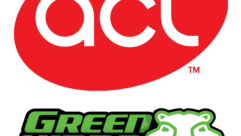

Making Sense of Green Rules
You’ve read what you can about green AV. You’ve contemplated how to address LEED requirements in your next project. And you’ve begun weighing the small steps you can take toward making your own business more sustainable. But a fundamental question remains: Have you found a compelling reason to take the leap?
Maybe all the stories and how-tos haven’t done the trick. If not, then perhaps we can spark some inspiration by exploring some of the reasons you might have to take some steps to modify how you work–whether you choose to call it “green AV” or not.
You’ve read what you can about green av, including Pro AV’s March 2009 special issue. You’ve contemplated how to address LEED requirements in your next project. And you’ve begun weighing the small steps you can take toward making your own business more sustainable (see “Cheat Sheet: 35 Ways to Practice Green,” March). But a fundamental question remains: Have you found a compelling reason to take the leap? Have you felt the impetus to implement some of the steps you know will get your business on the path to sustainability?
Midori Connolly
In 2006, California signed into law Assembly Bill 32 (AB 32). The law mandates that greenhouse gas (GHG) emissions be reduced to 1990 levels by 2020. The law will require calculation, reporting, and limitation of the GHGs produced by all businesses operating in the state, no matter the size or sector.
If those of you in other states are thinking, “Good thing I don’t have to worry about this,” think again. In a groundbreaking move in March, the U.S. Environmental Protection Agency sent a proposal to the White House stating that global warming is endangering the public’s health and welfare. Although it doesn’t sound like earth-shattering news to those who have watched two minutes of a National Geographic special, this landmark federal assessment will likely lead to regulation of GHGs across the nation.
Again, if California is any indicator, such legislation could influence many industries. For example, legislators here have moved to ban all but the most energy-efficient LCDs and plasmas from retailers’ shelves in an effort to achieve the AB 32 goals. But more practically speaking, if, for example, you operate a vehicle in your line of work, you will need to know its emissions; if you turn on the lights in your office, you’ll need to add that to your carbon footprint.
Before you take drastic measures, focus on some of the simple things you could do right now–regulations or not. You could implement lighting controls, calculate your carbon footprint at a website like www.carbonneutral.com, or replace your vehicles with low-emission, high-efficiency models.
In addition to the regulation of GHG there are laws governing eWaste, namely, the disposal of electronic products. Flavors of eWaste regulation vary from state to county to city. Although not yet enforced at the federal level, nationwide eWaste regulation could get a boost from an electronics product stewardship bill that has been circulating through the House Subcommittee on Energy and Environment. Knowing it will probably have more clout under the new administration, expect the EPA to step up its role in establishing and enforcing eWaste laws in the near future.
As it stands, 18 states have already dictated the terms for eWaste disposal: California, Connecticut, Hawaii, Illinois, Maine, Maryland, Michigan, Minnesota, Missouri, New Jersey, North Carolina, Oklahoma, Oregon, Rhode Island, Texas, Virginia, Washington, and West Virginia.
The implications for the AV industry are extensive. For manufacturers, designing products with their end-life in mind is essential. When it comes to integrators and installers, clients will associate their AV gear with the service providers that put it in, rather than a manufacturer they’ve never met. That means we as an industry need to be aware of whether our partners are in compliance with any and all sustainability regulations.
The standing advice is to responsibly dispose of your eWaste. That can mean determining who does it right. Due to increased scrutiny, organizations have stepped up to improve third-party verification of the destruction and/or recycling of goods, including electronics. In their Southern California and Pennsylvania facilities, eWorld Recyclers has gone so far as to install cameras in their plants to assure clients that the dismantling and destruction of recycled products is actually happening on site.
So start now and find a responsible home for your and your clients’ eWaste. To help, begin with the Basel Action Network (www.ban.org) and its e-Stewards program or turn to your state’s environmental agency.
Facing The Implications
But I’m going to be honest with you. As passionate as I am about the green AV movement, as a small-business owner, I’m also concerned about how government mandates might affect our operations.
Curious to learn another small-business owner’s viewpoint, I spoke to Christian Samuelson, president of XrossPoint AV, an installation and lighting design company based in the Washington, D.C., metro area. Although he doesn’t advertise green AV offerings or market himself as a green business, he is studying for his LEED Accredited Professional certification, building a new LEED-certified facility, and purchasing an alternative fuel-powered vehicle.
When I asked if he was worried about increased regulations, he offered the optimistic–and realistic–opinion: “Whether we like the idea of new laws or not, we really don’t have a choice at this point. Trashing the planet and carrying on with our wasteful methods isn’t an option.” His belief is that by being proactive and choosing at least a few green practices, he will be far ahead of the curve when, and if, these mandates are directed at his business. I think we could all benefit from seeing it this way.
By no means should you overhaul your business overnight, but by creating a plan for systematic integration, you can have a measurable outcome to show for your efforts. And for now, we’re focusing here only on the potential must-dos when it comes to sustainability regulation. But green AV isn’t just about reacting to rules. Next column we’ll explore the potential profitability of green AV–things that can transform the must-dos into want-tos.
Midori Connolly is CEO of Pulse Staging and Events in San Diego, a member of the Green Meeting Industry Council, a corporate social responsibility trainer for Meeting Professionals International, and an InfoComm lecturer on green AV topics.









